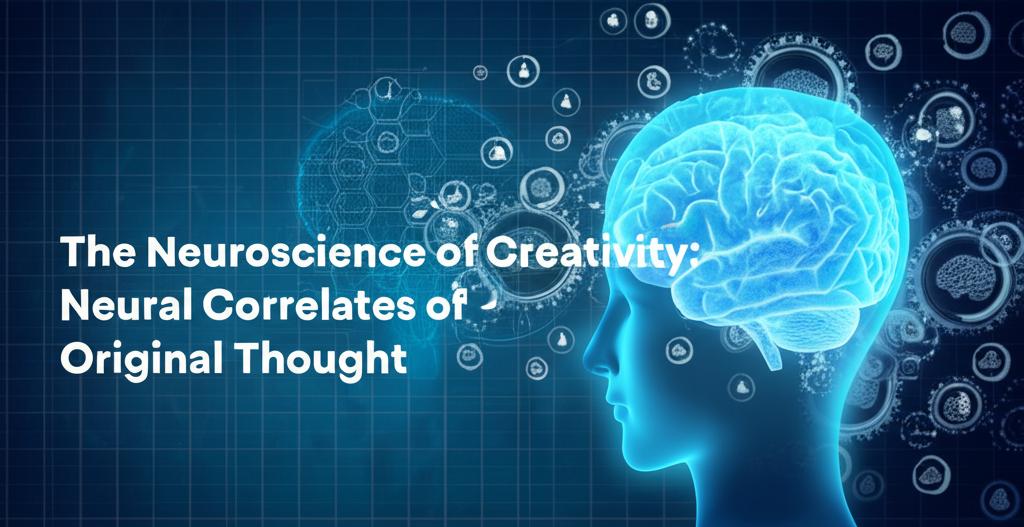Creativity, the ability to produce novel and valuable ideas, is a complex cognitive function that neuroscience is increasingly beginning to understand. It's not confined to a single brain region, but rather emerges from the dynamic interplay of large-scale brain networks.
Key Brain Networks in Creative Thought:Recent research highlights the crucial roles of primarily two, and sometimes three, major brain networks in creative cognition:
- Default Mode Network (DMN): This network is active during internally focused thought processes like daydreaming, mind-wandering, and envisioning the future. It is believed to be fundamental in the spontaneous generation of novel ideas and associations. Studies suggest that creative ideas may originate in the DMN.
- Executive Control Network (ECN): This network is engaged during tasks demanding attention, cognitive control, planning, and decision-making. For creativity, the ECN plays a vital role in evaluating, refining, and selecting the ideas generated by the DMN. It helps to manipulate ideas mentally and inhibit those that are not relevant or useful.
- Salience Network (SN): Some research also points to the involvement of the Salience Network, which is thought to help in switching between the DMN and ECN and in detecting relevant stimuli.
A fascinating aspect of the neuroscience of creativity is the observed cooperation between networks that often have an antagonistic relationship, particularly the DMN and ECN. While the DMN allows for a broad search for ideas, the ECN helps to focus and channel these ideas towards a useful outcome. This dynamic interaction is considered a key marker of creative ability. Highly creative individuals appear to be better at simultaneously engaging these networks.
The Two Steps to Originality and the Role of Divergent Thinking:Research suggests a two-step process for generating original thought:
- Idea Generation: Primarily driven by the DMN, this phase involves producing a wide range of possible solutions or ideas, a process often referred to as divergent thinking. Divergent thinking tasks, like the "alternative uses" task (e.g., listing novel uses for a common object like a paperclip), are commonly used to assess creative potential. Fluency (number of ideas), flexibility (variety of idea categories), and originality (uncommonness of ideas) are key dimensions of divergent thinking.
- Idea Evaluation and Refinement: This phase involves the ECN, which assesses the novelty and appropriateness of the generated ideas, selecting the most promising ones. This is more aligned with convergent thinking, which aims to find a single best solution.
- Brain Activity and Connectivity: Studies using neuroimaging techniques like fMRI (functional Magnetic Resonance Imaging) and EEG (electroencephalography) have identified several brain regions whose activity and connectivity patterns are associated with originality.
Increased activity in the DMN is often seen during the initial stages of creative tasks.
Enhanced coupling or synchronization between the DMN and ECN is linked to higher creative performance.
Specific regions like the medial prefrontal cortex (part of the DMN), inferior frontal gyrus, temporal lobe (especially the anterior superior temporal gyrus, linked to "Aha!" moments), and parietal regions have been consistently implicated.
Some studies suggest that individuals with higher originality show more flexible semantic associative networks, indicating an ability to connect distant concepts.
- Brain Waves: EEG studies have looked at brain wave patterns, with some research indicating that alpha wave activity, particularly in posterior brain regions, is associated with creative thinking.
- Brain Entropy: Recent findings suggest that higher brain entropy (a measure of the complexity and randomness of brain activity) in certain regions, such as the left dorsal anterior cingulate cortex/pre-supplementary motor area and left dorsolateral prefrontal cortex, is positively correlated with divergent thinking ability. This implies that more flexible and dynamic brain states might support creative thought.
- Neurotransmitters: Dopamine, associated with reward and motivation, is thought to play a role in cognitive flexibility and divergent thinking.
- Sleep: Certain sleep stages, particularly REM sleep and the point of falling asleep, may be conducive to creative thought by fostering unusual connections between ideas.
- Mindfulness: Practices like meditation have been shown to potentially increase connectivity between the DMN and ECN, thereby aiding the integration of idea generation and evaluation.
The neuroscience of creativity is a rapidly evolving field. While the involvement of networks like the DMN and ECN is becoming clearer, researchers are still exploring the precise timing and dynamics of their interaction during different phases of the creative process (generation vs. evaluation). Advanced brain imaging and analysis techniques are providing deeper insights into how these networks cooperate and how individual differences in brain structure and function relate to creative ability. Future research aims to further unravel these complex neural mechanisms, which could eventually lead to interventions designed to foster and enhance creative thinking. Understanding the neural underpinnings of how we generate original thoughts holds promise for education, problem-solving, and innovation across various domains.

